Chapter 10
What Are Singapore Children’s Society’s Critical Business Functions Concerning Business Continuity Management?
Singapore Children’s Society (SCS) has long been a pillar of support for children, youth, and families in need, offering essential services that promote their well-being and protect their rights.
With 12 service centres across Singapore, the organisation’s mission spans diverse social service domains—ranging from child protection and family services to youth development and community engagement.
As SCS continues to serve vulnerable communities, it faces a growing need to ensure that its operations remain resilient and uninterrupted during crises or disruptions.
Business Continuity Management (BCM) provides the structured approach necessary to achieve this resilience.
Central to BCM is the identification of Critical Business Functions (CBFs)—the essential activities that must continue or be rapidly restored to protect life, safeguard beneficiaries, and maintain public trust.
For a non-profit organisation such as SCS, understanding these functions ensures that vital community services are not compromised, even in the face of emergencies such as pandemics, cyber incidents, or facility outages.
ISO 22301 Approach to Identifying Critical Business Functions
In the context of SCS, Critical Business Functions (CBFs) refer to the key operational activities and service lines that directly support the organisation’s mandate to care for children and families.
These are functions whose prolonged disruption would significantly affect the safety, welfare, and continuity of services to beneficiaries, or damage the organisation’s reputation and ability to operate.
Each CBF is supported by essential resources—people, processes, technology, facilities, and information—that must be identified, protected, and recoverable.
The method of defining CBFs involves engaging with centre heads, service leads, and corporate support units to determine the minimum acceptable service levels and recovery priorities under the Business Continuity Plan.
Overview of Singapore Children’s Society’s Critical Business Functions
The following are the key Critical Business Functions identified for Singapore Children’s Society. They represent the core areas that enable the organisation to fulfil its mission and maintain operational stability during disruptions.
|
CBF Code |
Critical Business Function (CBF) |
Description and Purpose |
Rationale for Criticality |
|
1 |
Case Management and Child Protection Services |
Management of child welfare and protection cases, including intake, assessment, counselling, and coordination with MSF and partner agencies. |
Direct impact on child safety and well-being; regulatory and ethical obligations must continue without interruption. |
|
2 |
Family and Community Support Services |
Counselling, mediation, and family support programs that prevent family breakdown and strengthen community ties. |
Disruption could lead to escalated social issues and loss of essential support for vulnerable families. |
|
3 |
Youth Engagement and Development Programmes |
Outreach and intervention programmes for at-risk youth, including guidance, mentorship, and school partnerships. |
Ensures continuous engagement with youth to prevent behavioural and social risks and protect community stability. |
|
4 |
Residential and Drop-In Centre Operations |
Management of centres that provide safe spaces, temporary care, and activity-based support for children and youth. |
Essential for the physical and emotional safety of beneficiaries who depend on daily support. |
|
5 |
Donor Management and Fundraising Activities |
Coordination of fundraising events, donor relations, and financial stewardship to sustain operational funding. |
Critical to maintaining financial viability and donor confidence in service continuity. |
|
6 |
Finance and Grant Administration |
Management of funds, accounting, and grant compliance with government and donor requirements. |
Supports ongoing service operations and ensures accountability to stakeholders. |
|
7 |
Information Management and Data Protection |
Maintenance of case management systems, beneficiary records, and data privacy safeguards. |
Ensures continuity of service records and compliance with PDPA and confidentiality standards. |
|
8 |
Human Resource and Volunteer Management |
Coordination of staff deployment, volunteer engagement, and workforce welfare. |
Ensures sufficient manpower and continuity of care delivery across all service centres. |
|
9 |
Communications and Public Relations |
Internal and external communication to stakeholders, the public, and the media during crises. |
Maintains transparency, trust, and effective coordination during disruptions. |
|
10 |
Facilities and Safety Management |
Ensures the physical safety, accessibility, and maintenance of service centres and offices. |
Protects beneficiaries, staff, and volunteers; essential for safe resumption of services post-disruption. |
Prioritisation and Recovery Considerations
The criticality of each function varies depending on its time sensitivity, regulatory importance, and impact on beneficiaries.
For example, child protection case management and residential centre operations require near-immediate recovery (within hours), whereas donor management or communications may tolerate short-term delays (within days).
SCS’s Business Continuity framework ensures that appropriate recovery strategies, such as remote case access, data backup systems, alternate work sites, and resource redeployment, support each function.
These measures are periodically tested through tabletop and functional exercises to validate their effectiveness.
Identifying and protecting Singapore Children’s Society’s Critical Business Functions is fundamental to maintaining the organisation’s resilience and ability to serve its beneficiaries in times of crisis.
By embedding business continuity principles into daily operations, SCS safeguards not just its internal processes but also the trust and welfare of the children, youth, and families who depend on its care.
This understanding forms the foundation for subsequent planning elements—such as resource dependency mapping, recovery strategies, and communication protocols—ensuring that SCS remains steadfast in fulfilling its mission, even under the most challenging circumstances.
More Information About Business Continuity Management Courses

 To learn more about the course and schedule, click the buttons below for the BCM-300 Business Continuity Management Implementer [B-3] course and the BCM-5000 Business Continuity Management Expert Implementer [B-5].
To learn more about the course and schedule, click the buttons below for the BCM-300 Business Continuity Management Implementer [B-3] course and the BCM-5000 Business Continuity Management Expert Implementer [B-5].
![Register [BL-B-3]*](https://no-cache.hubspot.com/cta/default/3893111/ac6cf073-4cdd-4541-91ed-889f731d5076.png) |
 |
 |
 |
 |
 |
![FAQ [BL-B-3]](https://no-cache.hubspot.com/cta/default/3893111/b3824ba1-7aa1-4eb6-bef8-94f57121c5ae.png) |
If you have any questions, click to contact us.
|
 |
 |
 |
 |




![BCM [E1] [C10] Identifying Critical Business Functions Banner](https://blog.bcm-institute.org/hs-fs/hubfs/BCM%20E1%20Blog%20Banner/BCM%20%5BE1%5D%20%5BC10%5D%20Identifying%20Critical%20Business%20Functions%20Banner.png?width=1920&height=384&name=BCM%20%5BE1%5D%20%5BC10%5D%20Identifying%20Critical%20Business%20Functions%20Banner.png)
![[BCM] [Thin Banner] Summing Up](https://blog.bcm-institute.org/hs-fs/hubfs/BCM%20Generic%20Banner/%5BBCM%5D%20%5BThin%20Banner%5D%20Summing%20Up.png?width=1920&height=250&name=%5BBCM%5D%20%5BThin%20Banner%5D%20Summing%20Up.png)
![Email to Sales Team [BCM Institute]](https://no-cache.hubspot.com/cta/default/3893111/3c53daeb-2836-4843-b0e0-645baee2ab9e.png)

